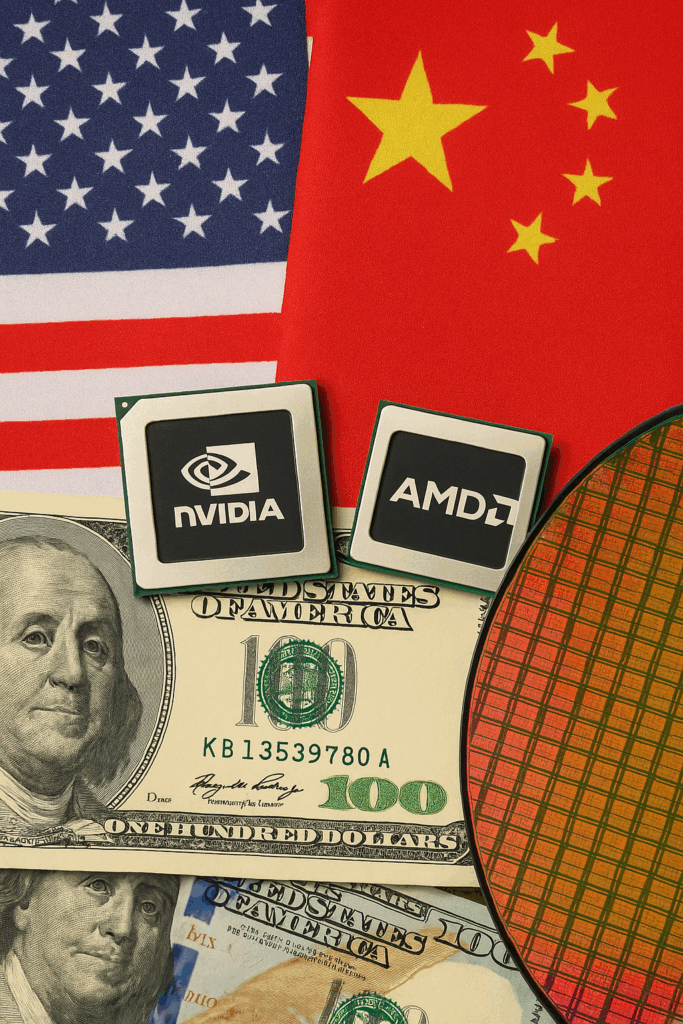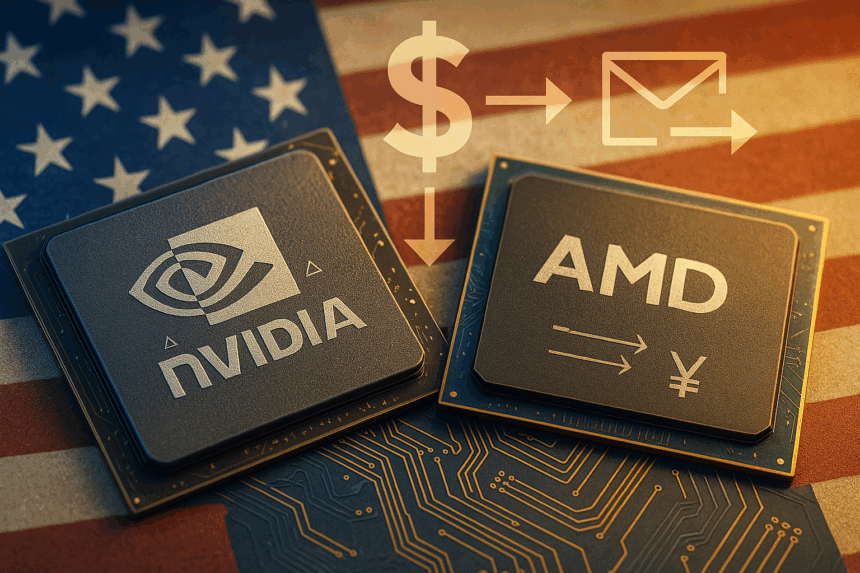Two of the world’s biggest chipmakers — Nvidia and AMD — are back in the Chinese AI hardware market. But the return comes at a steep cost: both companies have agreed to give the U.S. government 15% of their revenue from advanced chip sales to China. This arrangement secures export licenses for the highly competitive market, ending a months-long ban on their products. The deal has quickly drawn praise from some in industry circles, while critics question its legality under the U.S. Constitution.
What’s Happening & Why This Matters
The agreement follows a turbulent year in U.S.–China trade relations. In April, the Trump administration blocked the export of Nvidia’s H20 and AMD’s MI308 chips to China. These chips were designed with reduced capabilities to comply with earlier Biden-era export restrictions, but were still seen by U.S. officials as too sensitive for Chinese buyers.

That stance has now changed. Sources told the Financial Times and The New York Times that the U.S. Commerce Department is issuing new export licenses for these chips. In exchange, Nvidia and AMD will pay Washington 15% of revenue from their Chinese AI chip sales. The arrangement reportedly came after direct discussions between Nvidia CEO Jensen Huang and President Donald Trump, including a meeting just days before the deal was announced.
The Geo-political Angle
China has consistently condemned U.S. chip restrictions, accusing Washington of using technology controls to “maliciously contain and suppress” Chinese development. Some analysts believe the decision to allow sales could be linked to Beijing’s easing of rare earth export limits, which are critical for semiconductor manufacturing.
Meanwhile, security experts remain uneasy. A group of 20 specialists warned Commerce Secretary Howard Lutnick that even lower-powered AI chips could be used for military purposes, from autonomous weapons systems to intelligence surveillance platforms. “The line between optimising an online marketplace and optimising military logistics does not exist in the Chinese system,” they wrote.
Nvidia disputes this view, stating that the H20 chip “does not enhance anyone’s military capabilities” and that the U.S. government has complete oversight of every transaction. The company also argues that selling these chips abroad strengthens America’s economic and national security by expanding its global developer base.
Legal and Policy Concerns

While the deal opens a lucrative market, it has triggered a wave of criticism from policy experts. Peter Harrell, a nonresident fellow at the Carnegie Endowment for International Peace, posted that “the U.S. Constitution flatly forbids export taxes,” suggesting the revenue-sharing arrangement could be unconstitutional. Douglas Irwin, a Dartmouth College professor, noted the payment might be framed as a “payout” rather than a tax, but the legal questions remain unresolved.
The U.S. government has not said how it will use the additional funds. Observers also question whether this deal opens the door for similar arrangements with other companies seeking to access restricted markets.
TF Summary: What’s Next
The Nvidia–AMD agreement represents a rare softening in the U.S.–China technology standoff — but it’s not a peace treaty. The 15% revenue payment is both a market reentry fee and a legal grey zone. How the legal system, lawmakers, and other chipmakers respond could shape the future of export controls.
For now, the companies get access to a massive customer base; China gets cutting-edge AI chips; Washington, D.C., receives a share of the profits. The real question is whether this model is a one-off workaround or a new tool in U.S.-global trade policy.
— Text-to-Speech (TTS) provided by gspeech


